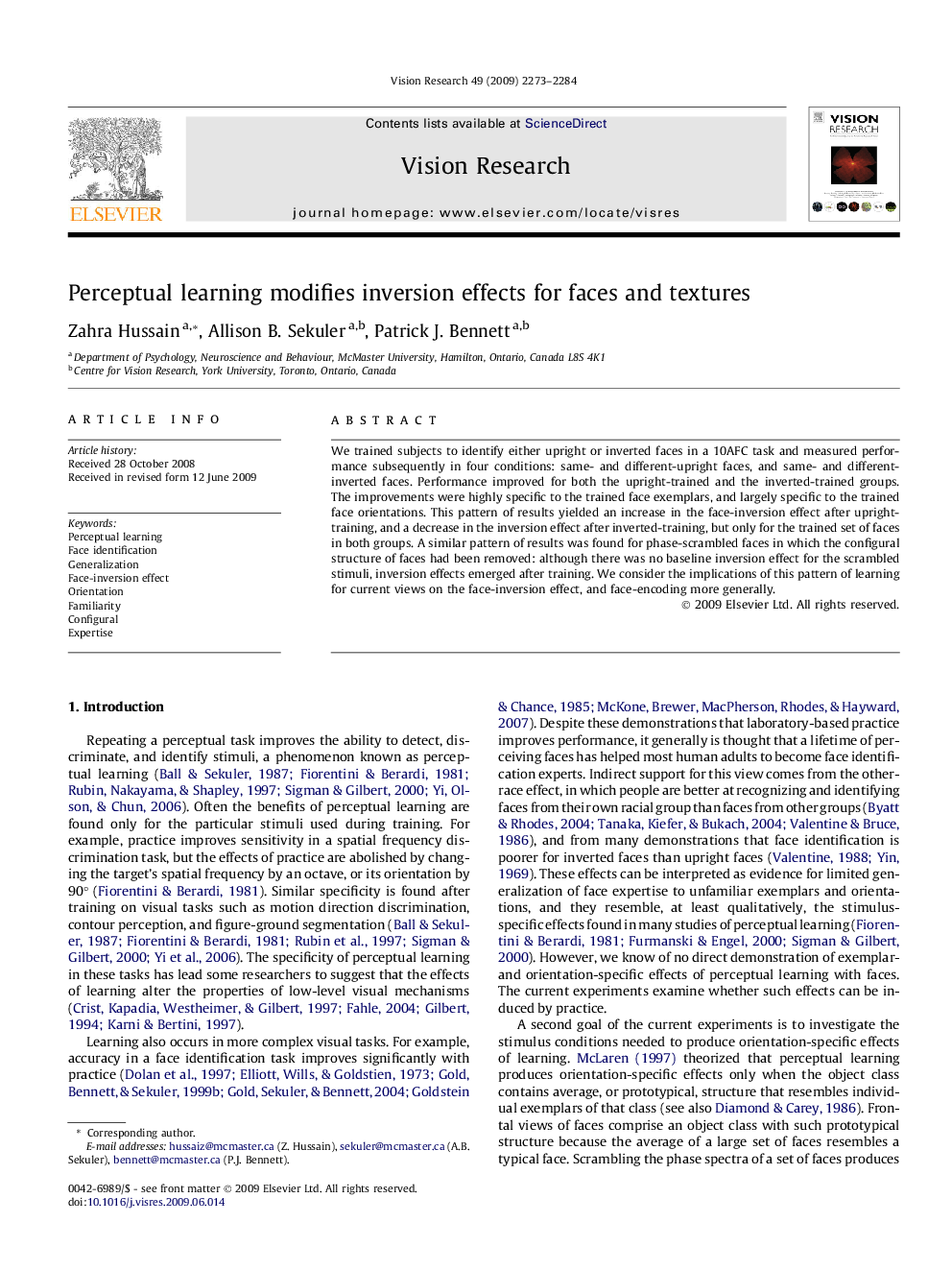| Article ID | Journal | Published Year | Pages | File Type |
|---|---|---|---|---|
| 6203937 | Vision Research | 2009 | 12 Pages |
We trained subjects to identify either upright or inverted faces in a 10AFC task and measured performance subsequently in four conditions: same- and different-upright faces, and same- and different-inverted faces. Performance improved for both the upright-trained and the inverted-trained groups. The improvements were highly specific to the trained face exemplars, and largely specific to the trained face orientations. This pattern of results yielded an increase in the face-inversion effect after upright-training, and a decrease in the inversion effect after inverted-training, but only for the trained set of faces in both groups. A similar pattern of results was found for phase-scrambled faces in which the configural structure of faces had been removed: although there was no baseline inversion effect for the scrambled stimuli, inversion effects emerged after training. We consider the implications of this pattern of learning for current views on the face-inversion effect, and face-encoding more generally.
